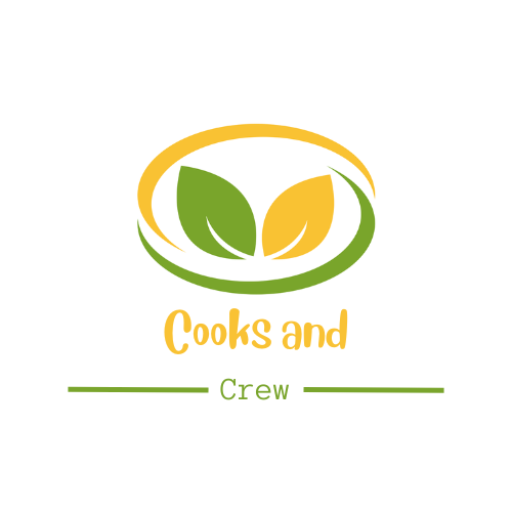
Imagine this scenario: you find yourself responsible for cooking for a family with food allergies. It may seem like a daunting task, like trying to solve an intricate puzzle without any guidance. But fear not! In this insightful article, you will discover the secrets to preparing delicious, allergy-friendly meals that will satisfy the entire family. With a few simple and practical tips up your sleeve, you’ll be navigating the world of food allergies like a pro in no time.
In today’s world, where allergies seem to be more prevalent than ever, it’s crucial to know how to accommodate those with dietary restrictions. This article will be your ultimate guide, providing you with easy-to-follow instructions on how to create safe and mouthwatering dishes that will please even the pickiest eaters. From understanding the most common allergens to exploring creative ingredient substitutions, we’ve got you covered. Whether you’re new to the world of cooking for food allergies or simply looking to brush up on your skills, get ready to embark on a culinary journey that will make mealtime a joyous occasion for everyone involved.
Understanding Food Allergies
Food allergies are a common concern for many individuals and families. It is important to have a clear understanding of food allergies to ensure the safety and well-being of those affected.
Different Types of Food Allergies
Food allergies can vary in their severity and the specific foods that trigger an allergic reaction. The most common types of food allergies include allergies to peanuts, tree nuts, shellfish, fish, eggs, milk, soy, and wheat. It is important to note that food allergies can develop at any age, even in adulthood.
Common Food Allergens
Certain foods are more likely to cause allergic reactions than others. These foods, known as common food allergens, include peanuts, tree nuts (such as almonds, cashews, and walnuts), shellfish, fish, eggs, milk, soy, and wheat. These allergens are required to be clearly labeled on packaged food products in many countries, making it easier for individuals with food allergies to identify and avoid them.
Identifying Food Allergy Symptoms
Recognizing the symptoms of a food allergy is crucial in providing timely medical intervention. Symptoms can vary depending on the individual, but common signs of a food allergy include hives, itching, swelling, difficulty breathing, abdominal pain, vomiting, and diarrhea. If you or a family member experience any of these symptoms after consuming a particular food, it is important to consult a healthcare professional for proper diagnosis and guidance.

Creating a Safe Food Environment
Creating a safe food environment is essential for individuals with food allergies. Taking steps to prevent cross-contamination and ensuring a clean kitchen can significantly reduce the risk of an allergic reaction.
Understanding Cross-Contamination
Cross-contamination occurs when allergenic ingredients come into contact with non-allergenic foods or surfaces. This can happen in various ways, such as using the same cutting board or utensils for different foods, or even through shared kitchen appliances. To prevent cross-contamination, it is important to thoroughly clean all utensils, surfaces, and appliances after each use, and to have separate areas designated for preparing allergen-free meals.
Separate Utensils and Cookware
To avoid cross-contamination, it is advisable to use separate utensils and cookware for food allergy sufferers. This includes having designated cutting boards, knives, pots, and pans that are solely used for preparing allergen-free meals. Color-coding these items can also be helpful in distinguishing them from those used for allergenic ingredients, further reducing the risk of cross-contamination.
Maintaining a Clean Kitchen
Maintaining a clean and hygienic kitchen is crucial when cooking for a family with food allergies. Regularly cleaning countertops, sinks, and appliances with soap and water can help remove any traces of allergenic ingredients. Additionally, it is important to wash hands thoroughly before and after handling allergenic foods to minimize the risk of cross-contamination.

Meal Planning and Preparation
Meal planning and preparation play a vital role in managing food allergies and ensuring safe meals for the whole family. By reading food labels, substituting allergenic ingredients, and using allergy-friendly recipes, it becomes easier to cater to the unique dietary needs of family members with food allergies.
Reading Food Labels
When shopping for food, it is essential to carefully read food labels to identify potential allergenic ingredients. Common allergens are often listed in bold or highlighted to ensure easy identification. It is important to be aware of alternative names or hidden sources of allergens, as they can sometimes be listed under different names. If in doubt, contacting the manufacturer for clarification can provide peace of mind.
Substituting Allergenic Ingredients
Finding suitable substitutes for allergenic ingredients is key to creating safe and enjoyable meals for the entire family. There are numerous alternatives available for common allergens, such as using plant-based milk instead of dairy milk or substituting wheat flour with gluten-free options. Experimenting with different ingredients and recipes can help discover delicious alternatives that cater to individual dietary needs.
Using Allergy-Friendly Recipes
One of the easiest ways to ensure safe meals for a family with food allergies is by using allergy-friendly recipes. These recipes are specifically designed to exclude common allergens while still providing flavorful and nutritious meals. Many cookbooks and online resources are available that provide a wide variety of allergy-friendly recipes suitable for breakfast, lunch, dinner, and snacks. Using these recipes can greatly simplify meal planning and preparation for families with food allergies.

Engage in Open Communication
Open communication is essential when living with or caring for someone with food allergies. By discussing allergies with family members, informing friends and relatives, and communicating with schools and restaurants, you can create a supportive network that understands and respects the dietary needs of those affected.
Discussing Allergies with Family Members
It is important to have open and honest discussions about food allergies with family members. This includes educating them about the specific allergies, how to handle allergenic ingredients in the kitchen, and the importance of strict avoidance. By involving the entire family in understanding and managing food allergies, everyone can work together to create a safe and inclusive environment.
Informing Friends and Relatives
Whether it’s during family gatherings, parties, or other social events, it is crucial to inform friends and relatives about food allergies. Providing them with a list of allergens to avoid and offering suggestions for safe alternatives can help prevent accidental exposure and ensure the well-being of family members with food allergies. This open communication also allows others to become more aware and empathetic towards food allergies.
Communicating with Schools and Restaurants
For individuals with food allergies, communication with schools and restaurants is essential. Informing teachers, school nurses, and cafeteria staff about specific food allergies enables them to take necessary precautions and provide safe meal options. Similarly, when dining out, communicating dietary requirements to servers and chefs allows them to take appropriate measures to avoid cross-contamination and prepare allergy-safe meals.
Generated with Pin Generator


